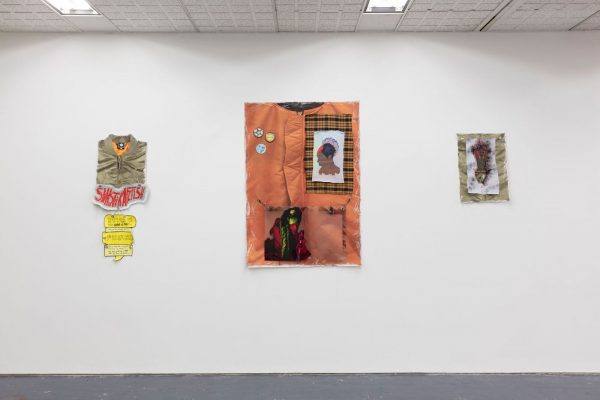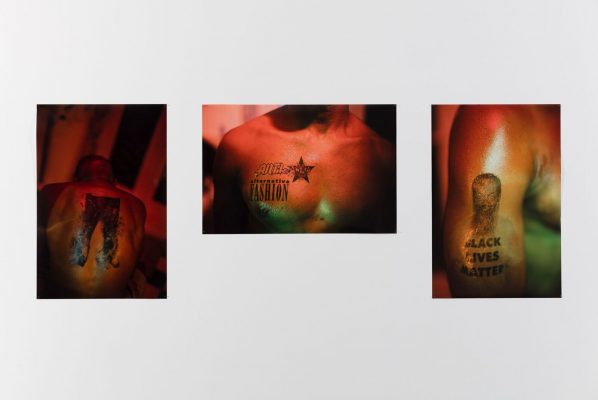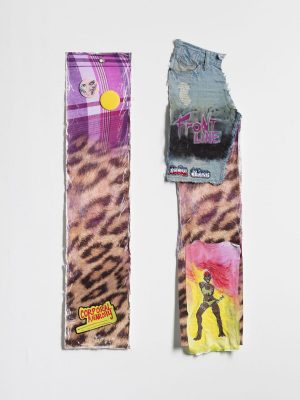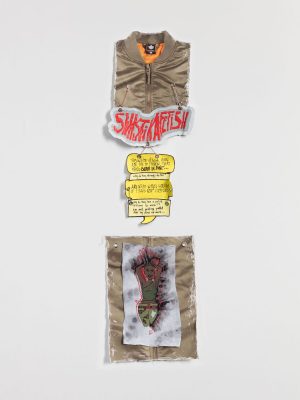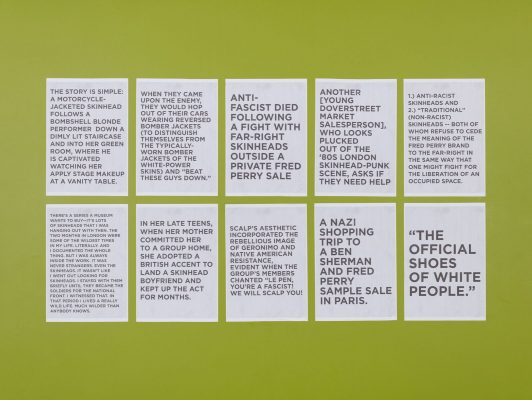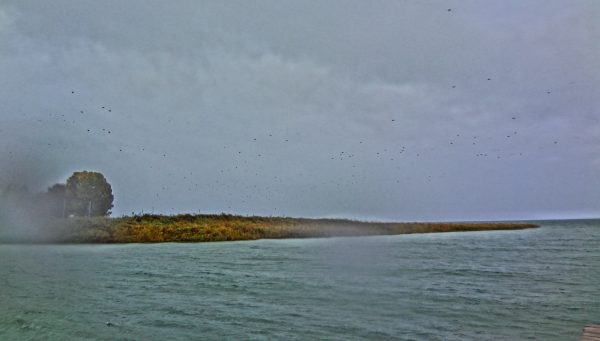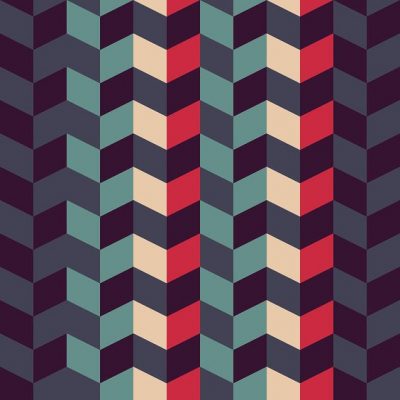‘IN SUNLIGHT I WAS PLASTICINE PERFORMANCE’, Juliana Huxtable wrote about her teenage years, in her first book published earlier this year. ‘MUTING CREATIVE AND SEXUAL IMPULSES TO APPEAR AMICABLE AND DIGESTABLE TO THOSE AROUND ME. I WAS THE BIRACIAL GIRL IN A TARGET AD WITH A CATALOGUE SMILE AND UNASSUMING SILHOUETTE AND PROFILE, IT’S NEGRO VIRILITY PACIFICED.’ Huxtable’s work regularly draws on her biography and appearance, creating prose, poems and photographic self-portraits that have established hers as a voice of progress in a society in retrograde.
Huxtable’s first solo exhibition in the UK is untitled, and on entering Project Native Informant, I encounter a set of photographs of tattoos, on the arm, chest, and back of a muscular brown man. One image shows a right bicep, on to which a bearded man wearing a ‘Black Lives Matter’ t-shirt has been inked. Another photograph shows the words ‘Anti-AntiFa: Alternative Fashion’ written across the man’s pectoral. A rightwing alliance formed in opposition to the anti-fascist movement, Anti-Antifa exemplify the manner in which white supremacists have taken to co-opting the language of civil rights activism. It’s hard to reconcile how two such opposing tattoos appear on the same body. The photographs are difficult to decode. I spend time with them and consider the authenticity of the tattoos, whether they have been transferred on, or, if they are permanent, why somebody would choose such contradictory iconography? There’s a clear and conscious hi-jacking of meaning within these forceful symbols that remains in play throughout the exhibition.
Project Native Informant’s show follows from one at New York’s Reena Spaulings Gallery in May 2017, ‘A Split During Laughter at the Rally’. There, Huxtable exhibited Untitled (The Wall) (2017), a flowchart that traced the complex, and politically fraught, devolution of skinhead symbology. What started out as an aesthetic that belonged to the first wave, anti-racist Punk movement in 1960s Britain – a movement that included West Indian communities through ‘skinhead reggae’ – was soon appropriated by successive Neo-Nazi groups, before it was adopted by the fashion industry (think Vivienne Westwood), and then used as iconography for mundane consumer culture (think ‘Mr Clean’).
In London, Huxtable expands the study Untitled (The Wall) to look at the manner in which divergent factions have sparred over brands and imagery synonymous with the skinhead look. Ten posters pasted on to a bright green wall each contain a text from an unattributed source. All written in a standard font and upper case, they range in tone from the curt formality of a newspaper headline to suggestive passages of more personal or biographical extract. ‘ANTI-FASCIST DIED FOLLOWING A FIGHT WITH FAR-RIGHT SKINHEADS OUTSIDE A PRIVATE FRED PERRY SALE’, reads one referring to the British clothing brand, which has become a far-right favourite. ‘IN HER LATE TEENS, WHEN HER MOTHER COMMITTED HER TO A GROUP HOME, SHE ADOPTED A BRITISH ACCENT TO LAND A SKINHEAD BOYFRIEND AND KEPT UP THE ACT FOR MONTHS,’ reads another. While it’s possible (and interesting) to follow up on these sources through online research, to even the uninformed reader the variety of referents point to the multiple reasons people might turn to punk as an aggressive or transgressive guise, without the work necessarily justifying or excusing individual motivations.
Other punk insignias are explored in a trio of fabric assemblages that hang on an adjacent wall. Images of MA1 flight bomber jackets – lightweight, Nylon military jackets produced in the late 1950s – have been inkjet-printed onto fabric. To one of these fabric sections, an ink drawing and an inkjet print of black female punks (or ‘afropunks’) are safety-pinned (cyberpunk is a genre of science fiction emerging in the 1980s drawing together the aspirations of punk and hacker subcultures). Badges ‘Ska & Rocksteady’ and ‘Rock Against Racism’ are also pinned on here, accessorising the piece in true punk style. On a neighbouring fabric piece (again with bomber jacket print backdrop) is fastened an oversized badge that reads ‘SwastikaFetish’. Below this are sewn several yellow fabric speech bubbles, and reading down through them we might be hearing one side of an imaginary conversation between a black female cyberpunk and a white, possibly male, other. ‘THIS WHITE NIGGA GON ASK ME IF I KNOW THAT BAND DEATH IN JUNE… why do they love a police costume so much?’ The dialogue sets up a juxtaposition between the figure of ‘white nigga’ and the black/female/punk that prods at the parameters of cultural appropriation: for whom is the borrowing of cultures an innocent or complimentary gesture, and in whom is it interpreted as a dangerous or violent act?
‘Corporal Anarchy’ is another of Huxtable’s badges, and could be an alternative title for this exhibition, which explores the insignia worn to identify and dis-identify with subculture as it aligns to or digresses from what sociologists call ‘parent culture’. And as parent culture swings so wildly, so terrifyingly, to the political right, an individual’s agility to operate beneath various subcultural signifiers seems less an exercise in disguise than a method of survival. Huxtable brings new dynamics to Maggie Nelson’s statement that ‘no one set of practices or relations has the monopoly on the so-called radical, or the so-called normative.’
